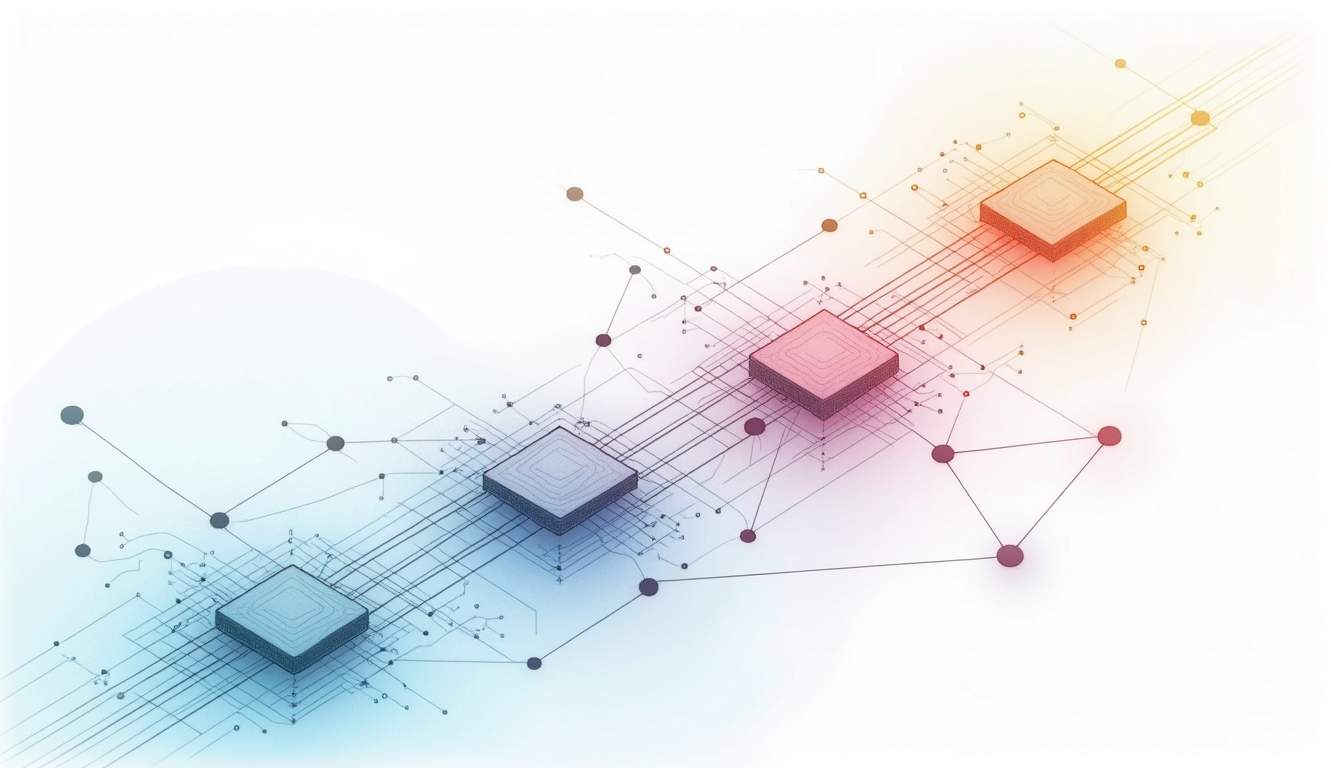The Future of Autonomous Web3 Infrastructure
As blockchain technology continues to evolve, the infrastructure supporting Web3 applications is undergoing a profound transformation. Autonomous Web3 infrastructure—systems capable of self-managing, self-optimizing, and self-healing—promises to redefine how decentralized applications (dApps) operate, scale, and maintain reliability. This article explores the key trends shaping this future, focusing on innovations like RPC auto-routing, multi-cloud integration, and cost optimization strategies that collectively empower developers and enterprises to build resilient, scalable blockchain solutions.
Understanding RPC Auto-Routing: The Backbone of Reliable Web3
What is RPC Auto-Routing and Why Does It Matter?
Remote Procedure Call (RPC) is the fundamental communication protocol that allows dApps to interact with blockchain nodes. Traditionally, developers connect to a single RPC provider, but this approach presents risks such as downtime, latency spikes, and single points of failure. RPC auto-routing is an advanced technique that dynamically directs requests across multiple RPC endpoints based on real-time performance metrics, availability, and cost.
This method ensures that Web3 applications maintain high availability and responsiveness by automatically switching to the best-performing RPC provider. For developers, this means fewer disruptions and a smoother user experience. As blockchain ecosystems grow in complexity and scale, RPC auto-routing is becoming indispensable for maintaining the reliability and scalability of decentralized applications.
RPC Failover vs. Load Balancing: Key Differences
In the context of RPC infrastructure, failover and load balancing are two critical concepts that enhance reliability but serve different purposes. Failover is a safety mechanism that switches traffic to a backup RPC provider when the primary one fails, ensuring uninterrupted service. Load balancing, on the other hand, distributes requests evenly across multiple providers to optimize resource utilization and reduce latency.
Combining these strategies within an auto-routing framework allows Web3 applications to achieve both robustness and efficiency. This hybrid approach mitigates the risk of outages while improving response times, which is crucial for applications handling millions of API calls daily.
Multi-Cloud and Multi-Provider Strategies: The New Standard
Leveraging Multi-Cloud Proxies for Blockchain
The rise of multi-cloud infrastructure is another game-changer for Web3. Google’s Multi-Cloud Proxy (MCP) technology exemplifies how blockchain applications can benefit from distributing workloads across multiple cloud providers. MCP acts as an intelligent routing layer that orchestrates API calls and balances traffic across diverse cloud environments, enhancing redundancy and reducing latency.
For blockchain developers, integrating MCP means that their applications are no longer tied to the limitations or outages of a single cloud provider. This multi-cloud approach significantly improves fault tolerance and scalability, allowing dApps to handle fluctuating workloads seamlessly.
Why Multi-Provider RPC Routing is the Future
Relying on a single RPC provider exposes Web3 projects to risks such as service interruptions and vendor lock-in. Multi-provider RPC routing aggregates endpoints from various providers, enabling automatic failover and optimized routing based on performance and cost. This strategy not only reduces downtime but also offers cost savings by routing traffic to the most economical providers without sacrificing quality.
Industry trends indicate that multi-provider solutions outperform single-provider setups by delivering superior uptime and latency metrics. As the Web3 ecosystem matures, embracing multi-provider RPC routing is becoming a best practice for any project aiming for long-term reliability and scalability.
Cost Optimization and Scaling: Overcoming Web3 Infrastructure Challenges
Reducing RPC Costs Without Sacrificing Performance
One of the biggest challenges for startups and enterprises in the Web3 space is managing infrastructure costs while scaling. RPC calls can become expensive at scale, especially when relying on premium single providers. Auto-routing technology offers a practical solution by intelligently directing traffic to the cheapest RPC providers that meet performance criteria.
By implementing multi-provider auto-routing, projects have reported cost reductions of up to 40% on RPC expenses. This optimization is crucial for startups operating on tight budgets and for established projects aiming to maximize operational efficiency. Additionally, cost savings can be reinvested into product development or user acquisition, fueling further growth.
Scaling to Millions of API Calls with Multi-Provider Aggregators
Handling millions of API calls daily is a reality for many successful dApps. Scaling infrastructure to meet this demand requires more than just raw capacity; it demands intelligent orchestration. Multi-provider RPC aggregators enable blockchain applications to distribute API calls across numerous endpoints, preventing bottlenecks and reducing latency.
This approach not only enhances user experience but also ensures that the infrastructure can grow dynamically with the application’s needs. By avoiding over-reliance on a single provider, projects can maintain consistent performance even during traffic surges or network disruptions.
Comparing Leading RPC Solutions: Choosing the Right Infrastructure Partner
Evaluating Alternatives: Beyond Single-Provider Limitations
Popular RPC providers like Alchemy, QuickNode, and Infura have long dominated the market, but their single-provider models come with inherent risks. Alternatives that offer multi-provider routing and auto-routing capabilities are gaining traction by addressing these limitations.
For example, solutions that aggregate multiple RPC endpoints provide enhanced redundancy, better latency management, and cost efficiencies. These features are especially critical for projects that cannot afford downtime or performance degradation. When evaluating RPC providers, it is essential to consider factors such as failover capabilities, load balancing, pricing models, and integration flexibility.
The Economics of RPC Routing: Balancing Cost, Latency, and Redundancy
RPC infrastructure costs are influenced by multiple factors including call volume, provider pricing, and network latency. Effective RPC routing balances these variables to deliver optimal performance at the lowest cost. Multi-provider routing solutions analyze real-time data to route requests intelligently, minimizing latency while avoiding expensive providers when possible.
This economic model not only reduces operational expenses but also enhances user satisfaction by providing faster response times. As Web3 applications become more complex and user expectations rise, the ability to optimize RPC routing economically will be a key competitive advantage.
Looking Ahead: The Future of Blockchain Infrastructure
From RPC to MCP: The Next Evolution
The future of blockchain infrastructure lies in the seamless integration of RPC auto-routing with multi-cloud proxy technologies. This evolution will enable Web3 applications to achieve unprecedented levels of reliability, scalability, and cost efficiency. MCP-based architectures will facilitate API orchestration across diverse cloud environments, further reducing latency and enhancing fault tolerance.
As this trend gains momentum, developers will benefit from simplified infrastructure management and improved user experiences. Autonomous Web3 infrastructure will not only self-optimize but also adapt dynamically to changing network conditions and user demands, paving the way for truly decentralized and resilient applications.
Practical Steps for Developers and Enterprises
Adopting autonomous Web3 infrastructure requires a strategic approach. Developers should start by integrating multi-provider RPC routing to mitigate downtime risks and optimize costs. Leveraging multi-cloud proxies like Google MCP can further enhance scalability and redundancy.
Additionally, ongoing monitoring and performance analysis are essential to fine-tune routing algorithms and ensure optimal resource utilization. By embracing these technologies and best practices, projects can future-proof their infrastructure and deliver superior decentralized experiences.
Conclusion
The shift towards autonomous Web3 infrastructure marks a pivotal moment in blockchain technology. Innovations such as RPC auto-routing, multi-cloud integration, and cost optimization are transforming how decentralized applications operate and scale. By moving beyond single-provider dependencies and embracing intelligent routing solutions, Web3 projects can achieve higher reliability, reduced latency, and significant cost savings.
As the ecosystem continues to mature, autonomous infrastructure will become the norm rather than the exception, enabling developers and enterprises to build the next generation of decentralized applications with confidence and agility.
Embrace the future of autonomous Web3 infrastructure with Uniblock, the orchestration platform that's revolutionizing how developers interact with blockchain data. Say goodbye to the complexities of managing multiple RPC providers and enjoy the simplicity of a single API endpoint. With Uniblock, you'll benefit from maximized uptime, minimized latency, and reduced costs—just like over 2,000 developers across 100+ chains already do. Don't let vendor lock-in hold you back. Start building with Uniblock today and scale your dApps, tooling, or analytics with ease and confidence.
.svg)






